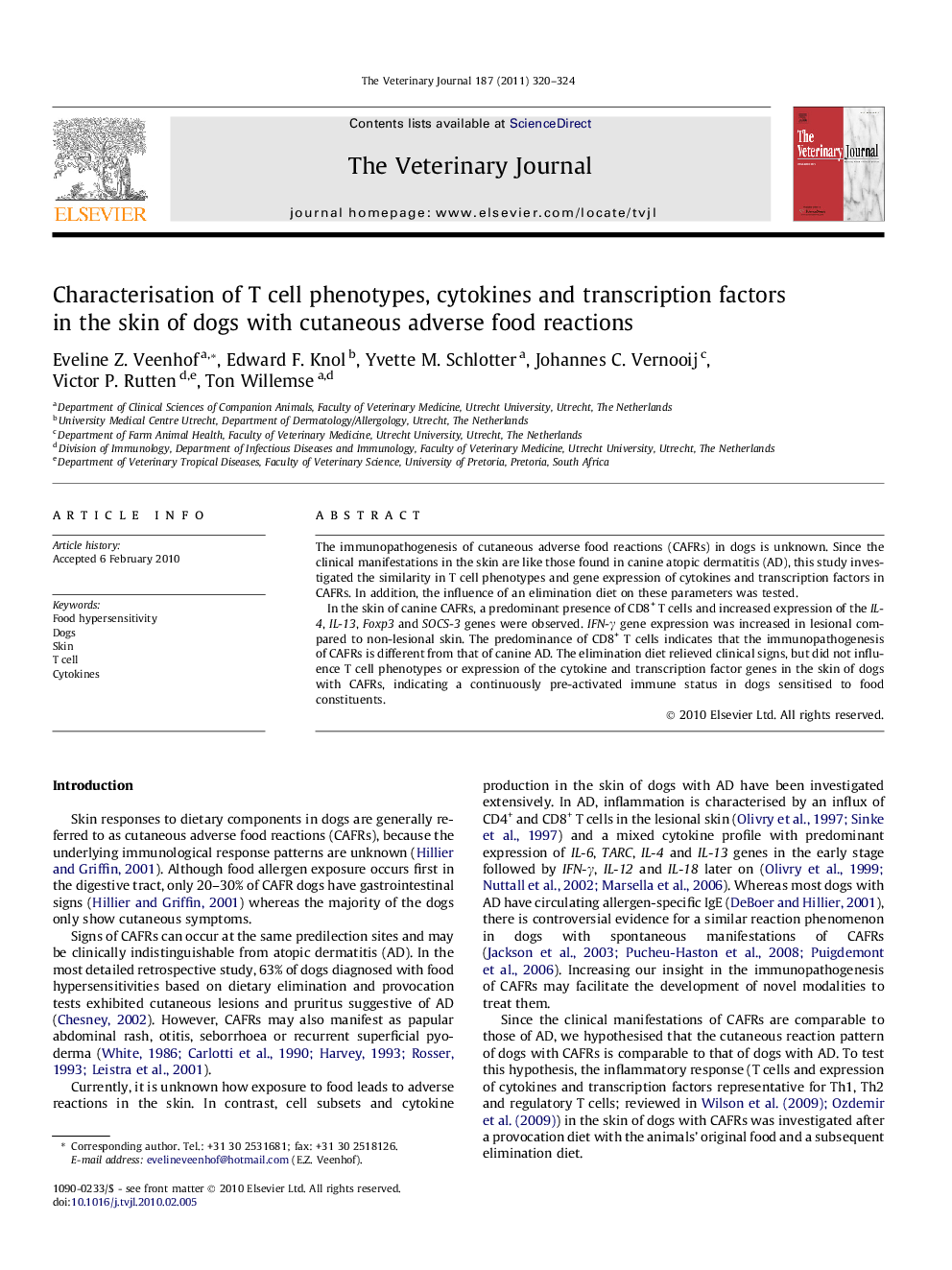| Article ID | Journal | Published Year | Pages | File Type |
|---|---|---|---|---|
| 2464780 | The Veterinary Journal | 2011 | 5 Pages |
The immunopathogenesis of cutaneous adverse food reactions (CAFRs) in dogs is unknown. Since the clinical manifestations in the skin are like those found in canine atopic dermatitis (AD), this study investigated the similarity in T cell phenotypes and gene expression of cytokines and transcription factors in CAFRs. In addition, the influence of an elimination diet on these parameters was tested.In the skin of canine CAFRs, a predominant presence of CD8+ T cells and increased expression of the IL-4, IL-13, Foxp3 and SOCS-3 genes were observed. IFN-γ gene expression was increased in lesional compared to non-lesional skin. The predominance of CD8+ T cells indicates that the immunopathogenesis of CAFRs is different from that of canine AD. The elimination diet relieved clinical signs, but did not influence T cell phenotypes or expression of the cytokine and transcription factor genes in the skin of dogs with CAFRs, indicating a continuously pre-activated immune status in dogs sensitised to food constituents.
